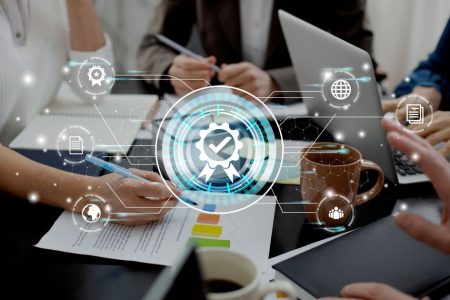
Introduction
The coming year presents government CIOs with both opportunity and urgency. Across federal, state, and local levels, agencies continue to feel the pressure to modernize digital infrastructure while balancing compliance, security, and citizen expectations. CIOs are no longer tasked only with managing IT operations; they are now strategic leaders responsible for driving digital-first initiatives that shape how governments function in a rapidly changing environment.
As 2026 approaches, the question is not whether digital transformation should be pursued but which priorities will have the most meaningful impact.
Strengthening Cybersecurity at Every Level
Cybersecurity remains one of the most pressing issues for public sector leaders. Government systems hold sensitive citizen data, which makes them prime targets for sophisticated cyberattacks. For CIOs, the priority in 2026 is moving beyond reactive defense to proactive resilience. This means adopting zero-trust frameworks, investing in continuous monitoring tools, and embedding security into every phase of the IT lifecycle.
The importance of this shift cannot be overstated. As ransomware, phishing, and state-sponsored threats become more advanced, CIOs must ensure their agencies can detect, contain, and recover quickly. In 2026, prioritizing cybersecurity is not just about protecting information—it’s about safeguarding public trust in government services.
Accelerating Cloud Adoption and Interoperability
While many agencies have made strides toward cloud adoption, 2026 should mark a turning point for CIOs to pursue enterprise-wide integration. The value of cloud lies not only in storage or scalability but also in enabling interoperability across departments and jurisdictions. Citizens do not interact with governments in silos; yet many government systems remain fragmented.
By consolidating platforms and leveraging cloud-native tools, CIOs can enable agencies to share data, reduce redundancies, and cut costs. Hybrid and multi-cloud environments will likely dominate strategies, giving governments the flexibility to balance legacy systems with modern capabilities. Prioritizing interoperability ensures that the benefits of digital transformation extend beyond individual departments to improve efficiency across entire governments.
Elevating the Citizen Experience
Government CIOs must recognize that digital transformation is ultimately about serving people better. In 2026, elevating the citizen experience should remain central to every IT decision. From applying for permits to accessing healthcare services, citizens expect digital interactions with government to be as intuitive as those with private-sector companies.
To meet these expectations, CIOs should prioritize investments in user-centric design, mobile accessibility, and real-time communication channels. Incorporating feedback loops and analytics can help agencies identify pain points and continuously refine services. A positive digital experience improves satisfaction and increases participation and compliance to create a more engaged and trusting citizen base.
Harnessing Data for Smarter Governance
Data is often called the new oil; but for governments, it is more accurate to think of it as the foundation for smarter, more accountable governance. CIOs entering 2026 must prioritize strategies for data governance, integration, and analytics. The ability to transform raw data into actionable insights allows agencies to predict trends, allocate resources effectively, and respond to crises with agility.
It’s important to note that data initiatives cannot succeed without a focus on accuracy, privacy, and ethics. CIOs must establish policies that balance the power of analytics with the responsibility of safeguarding citizen information. Emerging technologies like artificial intelligence (AI) and machine learning (ML) will play an increasingly critical role, but these tools must be deployed transparently to maintain public trust.
Building Workforce Readiness
Digital transformation is not solely a technological challenge—it is also a human one. Government CIOs must ensure their organizations are equipped with the skills and mindsets necessary to sustain innovation. In 2026, workforce readiness will mean reskilling employees to work effectively with AI-driven tools, cloud platforms, and modern cybersecurity practices.
Equally important is fostering a culture of adaptability. Transformation often meets resistance when staff feel excluded or overwhelmed. CIOs should prioritize training, communication, and change management strategies that empower employees rather than alienate them. By making workforce readiness a priority, CIOs can create an environment where innovation thrives.
Emphasizing Compliance and Risk Management
As regulations continue to evolve, compliance will remain a top concern for CIOs. Whether aligning with federal cybersecurity frameworks, state privacy laws, or accessibility mandates, CIOs must ensure digital transformation initiatives do not create unintended liabilities. The ability to demonstrate compliance and manage risk is essential for avoiding penalties and maintaining credibility with citizens and stakeholders.
In 2026, successful CIOs will move beyond a checklist approach to compliance. Instead, they will embed compliance into workflows and systems, making it a natural byproduct of how government operates. This proactive approach reduces friction and ensures that compliance strengthens, rather than slows, digital transformation.
Driving Sustainable and Equitable Technology Adoption
Technology choices in government are never neutral. They can either widen or bridge equity gaps depending on how they are implemented. CIOs must prioritize sustainable and inclusive technology strategies in 2026 to ensure that digital transformation serves all communities.
Bridging equity gaps includes designing systems accessible to people with disabilities, offering multilingual support, and addressing the digital divide by expanding broadband access. Environmental sustainability should also play a role with CIOs choosing energy-efficient infrastructure and pursuing green IT initiatives. By embedding equity and sustainability into technology decisions, CIOs ensure transformation benefits every citizen.
The Role of 3SG Plus in Supporting CIO Priorities
As government CIOs prepare for 2026, having the right partner can make the difference between stalled projects and successful transformation. 3SG Plus is more than a software reseller—we are a trusted integrator that helps agencies design, implement, and support digital solutions tailored to their unique challenges.
Our expertise spans enterprise content management, case management, compliance frameworks, and cloud-based integrations. We work with government leaders to create roadmaps that balance innovation with risk management, ensuring technology investments deliver lasting impact. From planning and deployment to ongoing managed services, 3SG Plus provides the end-to-end support CIOs need to meet the demands of modern governance.
By partnering with 3SG Plus, agencies gain not just technology, but a team committed to helping them unlock efficiencies, protect data, and enhance citizen services. Our role is to ensure CIOs can focus on strategy while we provide the expertise and support required for execution.
Conclusion
As 2026 approaches, government CIOs stand at a pivotal moment in shaping the future of public service. Prioritizing cybersecurity, cloud adoption, citizen experience, data governance, workforce readiness, compliance, and equity will position agencies to thrive in a digital-first era. These priorities are not just about technology—they are about building trust, transparency, and resilience into the very fabric of government. Government CIOs who act boldly in 2026 will lead agencies that are more efficient and more responsive to citizen needs.
